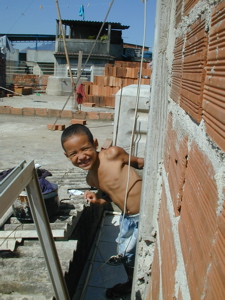
“Everybody knows the proverb about how it’s better to teach a man to fish than just to give him a fish, but there’s a step beyond that: it’s better that a man’s neighbor is the one teaching him to fish, his peer. If some expert swoops in from afar you miss half the value of the interaction because of the inequality in that relationship. But if it’s his peer teaching him? Then the man is much more likely to offer something in return. You are much more likely to create a real sustainable relationship rather than just a new dependency.” – Theresa Williamson, Founder, Catalytic Communities
Can individuals change the world? It's all a matter of leverage…
At BRINQ we've been exploring the creation of peer networks for local innovators in the Base of the Pyramid, particularly for innovation in toys and all things play! And although we've already written a number of recent articles about them, we thought it was a good moment to again bring up our friends in Rio de Janeiro, Brazil, who exemplify the power of peer networks. Those friends of course are the folks at Catalytic Communities (CatComm) , who we recently entered into a partnership with to help fundraise and expand their local world-changing network globally.
Why our intense interest in Catalytic Communities? Raw admiration for their work aside, we're just heeding the advice of Njeri Muhia, an economics professor at Egerton University in Njoro, Kenya who mentored us on participatory methods for development. Njeri told us, "Instead of trying to build entirely new infrastructure in poor communities, first try doing something new with existing capacity and groups." In Brazil, Catalytic Communities has already built a powerful peer network of community leaders and innovators drawn from amongst Rio de Janeiro's 750 squatter communities (favelas) and such a resource provides huge opportunities to new ventures like ours. In fact, through Patrick's involvement with the Base of the Pyramid Protocol, we found that networks like CatComm's are invaluable in seeking out new opportunities for business and development.